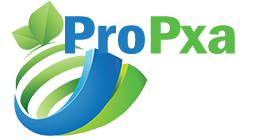Small electrical devices called cardiac pacemakers help people with bradycardia, or an unusually slow heart rate, control their heartbeat. Typically, pacemakers are surgically placed under the skin of the chest and wired to one or more electrical leads that provide electrical pulses to electrodes positioned close to the heart’s top two chambers (atria).
The market for cardiac pacemakers in 2021 was USD 3.93 billion, and by 2030 it will be worth USD 7.21 billion, growing at a 3.68% CAGR during the forecast period.
The main factors driving this market’s growth throughout the forecast period are an increase in the number of elderly people, technical improvements, and rising heart failure instances worldwide.
Market Dynamics
Drivers
A major factor fueling the global demand for cardiac pacemakers is the rising prevalence of cardiovascular diseases (CVDs) among the population. The market is also growing because of the aging population, which is increasingly susceptible to diseases such as arrhythmias, congenital cardiac disease, and atrial fibrillation. Additionally, the industry is being positively affected by rising health consciousness and understanding of alternative treatments for conditions related to the heart. In addition, governments in many nations are funding research and development (R&D) projects to advance surgical methods and facilitate access to healthcare facilities.
Restraints
However, a significant issue impeding the growth of the global market for cardiac pacemakers is the high cost of therapy. Throughout the forecast period, another factor restraining the expansion of the worldwide cardiac pacemakers market is the rising number of product recalls caused by defects and other problems.
Opportunity
The production of premium pacemakers (biventricular pacemakers) that completely satisfy every patient’s needs and provide individualized care is the only focus of international corporations. These recent developments are significantly increasing workflow accuracy and facilitating error reduction rates, providing many future market prospects.
Market Segmentation
By Product
In 2021, the implantable segment led the market with a revenue share of nearly 60%. Biventricular pacemakers, dual-chamber pacemakers, and single-chamber pacemakers are further categories for implantable pacemakers. One of the main factors driving market expansion is the rising demand for these devices for the treatment of heart failure and arrhythmias, as well as continuing clinical trials.
The external pacemaker segment will expand rapidly during the projection period due to the simple configuration, improved user interface, and enhanced low battery indicator. External pacemakers are noninvasive; therefore, there is a lower chance of problems following surgery. The devices also let patients monitor and record their everyday heart functioning.
By Type
In 2021, the conventional pacemakers segment led the market with 51% of the revenue share. This expansion is the result of ongoing improvements, affordability, small size, and extended shelf life. During the projected period, the MRI-compatible pacemaker market will expand at a profitable rate. The increased use of MRI-based diagnostics is responsible for the high percentage.
By Application
The Arrhythmias segment ruled the market in 2021 with 37.6% of the revenue share. The prevalence of cardiac arrhythmia is influenced by elements like lifestyle diseases, excessive alcohol use, smoking, and obesity.
The congestive heart failure segment will grow at the second-fastest rate. According to the CDC, around 6.5 million adults in the U.S. had heart failure as of December 2018. As a result, during the forecast period, there will be a greater need for pacemakers with cutting-edge technology.
By end-Use
In 2021, the hospitals and cardiac centers segment held a commanding share of almost 60.6%. Hospital and cardiac centers provide the best treatment possible when a patient is admitted. Furthermore, these facilities provide reimbursements during surgeries, which drives the segment’s growth. According to the American Heart Association, by 2030, there will be roughly 23.6 million more hospital admissions for cardiac arrest.
Regional Analysis
In 2021, North America was the largest market contributor, with 42.4% of the revenue share. The largest share is due to the aging population with cardiac issues, the presence of important players, quick technology breakthroughs like Bluetooth-enabled and MRI-compatible pacemakers, and better regulatory clearances. The incidence of cardiovascular diseases, such as congestive heart failure, cardiac arrests, and arrhythmias, is rising quickly in the United States, fuelling the need for pacemakers in the country. The market in the region is also driven by technical developments in the healthcare industry and an increase in the number of procedures linked to the heart.
The market in Asia Pacific will display a profitable CAGR of about 4.8%. This increase in the region’s industry is due to market penetration by important companies and vast unexplored prospects. Additionally, investments in the healthcare industry have become more popular, particularly in Japan, China, and India.
Key Players
- MicroPort Scientific Corporation
- BIOTRONIK
- Medtronic
- Boston Scientific Corporation
- MEDICO
- Zoll Medical Corporation
- Pacetronix
- Cook Medical
- Osypka Medical GmbH
- MEDICO SpA
- Oscor Inc.
- Lepu Medical
- Pacetronix
- LivaNova
- Osypka Medical
The market for cardiac pacemakers in 2021 was USD 3.93 billion, and by 2030 it will be worth USD 7.21 billion, growing at a 3.68% CAGR during the forecast period. The market for cardiac pacemakers is expanding due to the increased elderly population, atrial fibrillation (AFib) prevalence, and health care costs.
Related Reports:
Enteral Feeding Devices Market Report – The global enteral feeding devices market will witness a robust CAGR of 6.38%, valued at $3.48 billion in 2021, expected to appreciate and reach $6.088 billion by 2030, confirms Strategic Market Research.




















